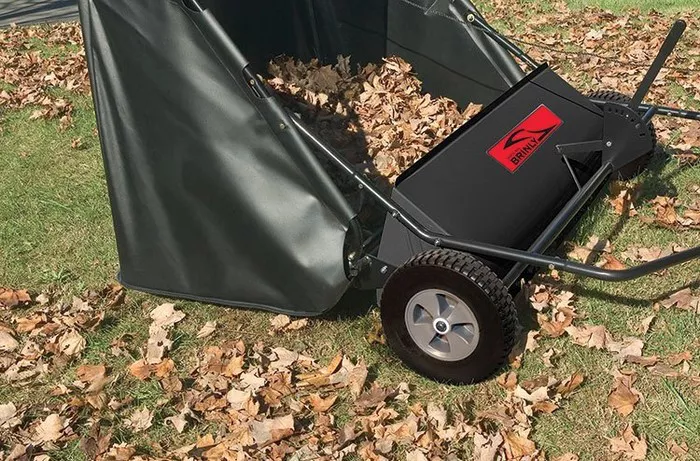The yard sweeper, also known as an outdoor sweeper or garden sweeping robot, has emerged as a cleaning tool in recent years with the development of smart home technology. It combines traditional sweeping functions with modern automation technology, providing households with a new way of cleaning. This article will delve into the operation principles, usage methods, advantages, disadvantages, and cost analysis of the yard sweeper, and address some common questions through the FAQ section to help readers fully understand this modern cleaning equipment.
I. Definition and Operation Principles of Yard Sweeper
The yard sweeper is an automated cleaning device designed for outdoor environments, capable of autonomously sweeping in open spaces such as gardens, yards, and sidewalks. It is typically equipped with rotating brush discs, a vacuum system, and driving wheels, achieving autonomous navigation and path planning through built-in sensors and navigation systems. During operation, the yard sweeper moves along preset paths, using rotating brush discs to sweep debris into the vacuum inlet, and then sucking the debris into the dust collection box through the built-in vacuum system.
II. Usage Methods and Operational Steps
1. Preparation: First, ensure that the yard sweeper’s battery is fully charged. Then, place the sweeper in the area to be cleaned, ensuring there are no obstacles around it.
2. Setting Parameters: Adjust the cleaning mode and suction power of the yard sweeper according to the size of the area to be cleaned and the amount of debris. Some high-end models also support remote control via a mobile application.
3. Start Cleaning: Press the start button, and the yard sweeper will automatically begin cleaning. During the cleaning process, it will avoid obstacles and return to the charging station for recharging when the battery is low.
4. Monitor Progress: Monitor the cleaning progress and remaining time in real-time through a mobile application or the device’s display screen. If necessary, the movement direction of the sweeper can be manually controlled.
5. End Cleaning: When the cleaning task is complete, the yard sweeper will automatically stop working and return to the charging station. At this point, the dust collection box can be emptied.
III. Advantages and Disadvantages of Yard Sweeper
Advantages:
1. Efficient Cleaning: The yard sweeper can quickly cover large areas, improving cleaning efficiency.
2. Time-saving: Automated cleaning reduces manual labor, allowing users more time to enjoy outdoor activities.
3. Ease of Operation: Modern yard sweepers typically feature intelligent navigation systems, making them easy to set up and operate.
4. Environmental Friendly: Electric sweepers reduce the use of fossil fuels, making them environmentally friendly.
Disadvantages:
1. High Cost: High-end yard sweepers have higher prices, which may not be suitable for all budgets.
2. Maintenance Requirements: Regular cleaning and maintenance of components such as dust collection bags and filters are necessary.
3. Limited Applicability: Some yard sweepers may not be able to handle wet or slippery surfaces or obstacles that are too high.
IV. Cost Analysis
The cost of a yard sweeper mainly includes the purchase price, maintenance costs, and electricity consumption. High-end models have higher initial investments, but in the long run, they can save a significant amount of time and labor costs due to reduced manual cleaning requirements. Maintenance costs include regularly replacing consumables such as dust collection bags, filters, and batteries. Electricity consumption depends on the cleaning frequency and the energy efficiency rating of the device. Overall, the long-term operating costs of a yard sweeper are relatively low, especially for users with large yards or frequent cleaning needs.
V. Conclusion
As a modern cleaning tool, the yard sweeper provides households with an efficient and convenient cleaning solution. It combines automation technology with traditional sweeping functions, significantly reducing users’ cleaning burden. Although the initial investment is high, it can save time and labor costs in the long run while being environmentally friendly. When choosing a yard sweeper, users should consider their actual needs, budget, as well as the performance and features of the device to find the most suitable product. With continuous technological advancements, we have reason to believe that yard sweepers will play a greater role in the future, bringing more convenience to people’s lives.
VI. FAQs
Q1: How to choose the right yard sweeper?
A1: When selecting a yard sweeper, factors such as the size of the cleaning area, terrain characteristics (such as slopes, grass, etc.), cleaning frequency, and budget should be considered. Additionally, pay attention to the device’s battery life, noise level, and whether it supports intelligent navigation features.
Q2: What maintenance issues should be noted for yard sweepers?
A2: Regularly cleaning the dust collection box and filters is crucial to maintaining the performance of yard sweepers. Additionally, check the battery condition and replace damaged components promptly. Avoid using the device in extreme weather conditions and follow the manufacturer’s instructions for proper operation and storage.
Q3: What is the noise level of yard sweepers?
A3: The noise levels of yard sweepers vary depending on the brand and model. Generally, electric sweepers have lower noise levels compared to fuel-powered sweepers. Some high-end models utilize noise reduction designs to minimize noise impact. When choosing, refer to product specifications or consult sales personnel for specific noise data.

